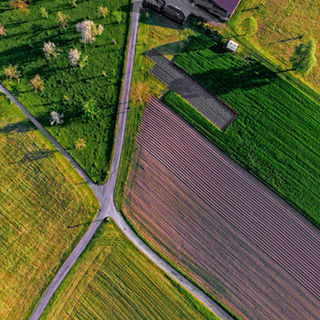

Our mission is to remove one gigaton of CO2 by 2040 and foster environmental regeneration in the Asia Pacific region through the integrated application of Enhanced Rock Weathering (ERW) and biochar for Agribusiness and mining partners. We aim to generate high quality carbon credits whilst increasing farming yields, reducing artificial fertiliser use, regenerate depleted soils and remediate decommissioned mining sites, creating sustainable and profitable ecosystems.
ABOUT US
Tambora Carbon Removal (TCR) is dedicated to scaling high-impact carbon removal through Enhanced Rock Weathering (ERW) and Biochar technologies. We partner with agribusinesses, mining companies, and smallholder farmers across Asia to design and manage ERW projects that deliver durable climate benefits and generate high-quality, integrity-assured carbon credits. Our work enhances soil health, boosts crop yields, reduces fertilizer use, and supports climate resilience in agricultural communities. Inspired by the geological legacy of the eruption of Mount Tambora in Indonesia, we turn Earth’s natural processes into practical, scalable climate solutions that benefit both people and the planet.
Enhanced Rock Weathering
Technology
Enhanced Rock Weathering (ERW) is an innovative yet long proven approach that harnesses the Earth's natural processes to remove atmospheric carbon dioxide while simultaneously improving land health. At its core, ERW involves accelerating the natural weathering of rocks by crushing them into a fine dust and spreading them across targeted areas.

ERW For Agribusiness
-
Carbon Dioxide Removal: ERW actively captures CO2 from the atmosphere, converting it into stable bicarbonates and providing a long-term storage solution.
-
Soil Enhancement: The application of rock dust enriches the soil with essential nutrients, reducing the need for artificial fertilizers and promoting healthier, more productive crops.
-
Increased Resilience: ERW can improve soil structure and water retention, making farmland more resilient to climate change impacts such as drought and erosion.
For Decommissioned Mining Sites
-
Soil Remediation: ERW can play a crucial role in rehabilitating degraded mining soils by neutralizing acidity and replenishing vital minerals, creating a foundation for ecological recovery.
-
Ecosystem Restoration: By fostering the return of vegetation, ERW helps to stabilize the soil, prevent erosion, and promote the development of diverse and thriving ecosystems on former mining lands.
-
Carbon Sequestration: The revegetation supported by ERW on these sites further contributes to carbon sequestration, turning previously barren areas into carbon sinks.
In essence, Enhanced Rock Weathering offers a dual benefit: mitigating climate change through carbon removal and restoring land health for agriculture and ecological revitalization.
BioChar
Biochar is a charcoal-like substance produced by burning biomass (organic matter like wood, crop residues, or manure) in a low-oxygen environment, a process called pyrolysis. This material offers a range of benefits for both agricultural and post-mining environments.

For Farmland
-
Carbon Sequestration: Biochar is a stable form of carbon that can persist in the soil for centuries, effectively sequestering carbon and mitigating climate change.
-
Soil Health Improvement:
-
Increased Fertility: Biochar improves soil structure, aeration, and water retention, creating a more favorable environment for plant growth.
-
Nutrient Retention: Its porous structure helps retain essential nutrients, reducing leaching and improving fertilizer efficiency.
-
pH Regulation: Biochar can help neutralize acidic soils, making nutrients more available to plants.
-
Microbial Activity: It provides a habitat for beneficial soil microorganisms, enhancing soil health and fertility.
-
-
Reduced Fertilizer Needs: By improving nutrient retention and availability, biochar can decrease the need for synthetic fertilizers.
-
Increased Crop Yields: Healthier soil leads to stronger, more productive plants and increased crop yields.
For Decommissioned Mining Sites
-
Soil Remediation:
-
Toxicity Reduction: Biochar can bind to pollutants and heavy metals in contaminated mine soils, reducing their toxicity and improving soil quality.
-
pH Modification: It can help neutralize acidic mine soils, creating conditions more suitable for plant growth.
-
Soil Structure Improvement: Biochar improves soil structure and water holding capacity, which is crucial for establishing vegetation on degraded mine lands.
-
-
Ecosystem Restoration:
-
Vegetation Establishment: By improving soil conditions, biochar promotes the establishment of vegetation, which helps stabilize the soil and prevent erosion.
-
Carbon Sequestration: The revegetation of mine sites, supported by biochar, increases carbon sequestration.
-
Water Quality Improvement: Biochar can reduce the runoff of pollutants from mine sites, improving water quality.
-
Biochar is a versatile tool for enhancing soil health, increasing agricultural productivity, and restoring degraded lands like decommissioned mining sites, while also contributing to climate change mitigation through carbon sequestration.



